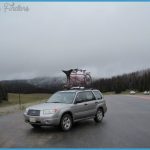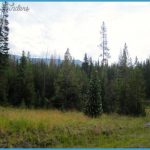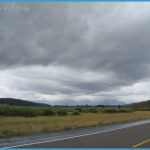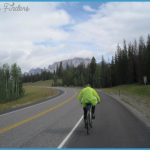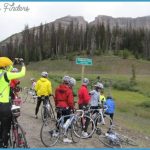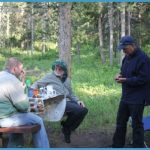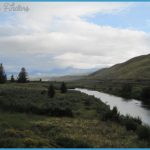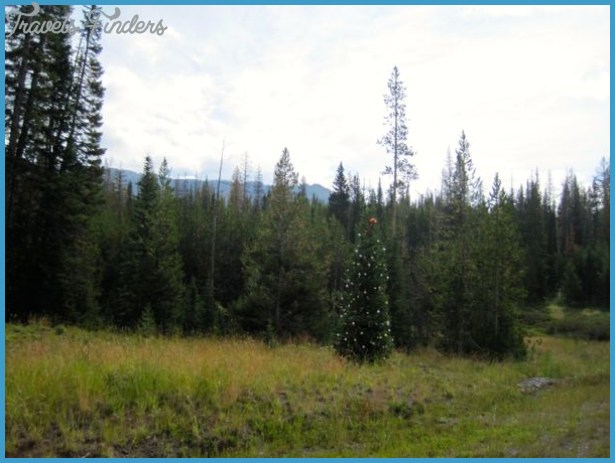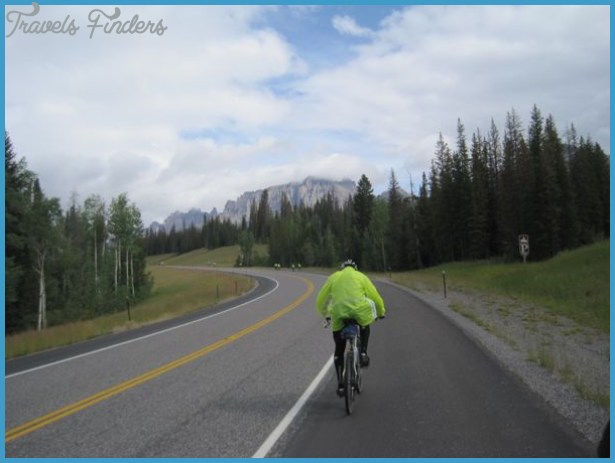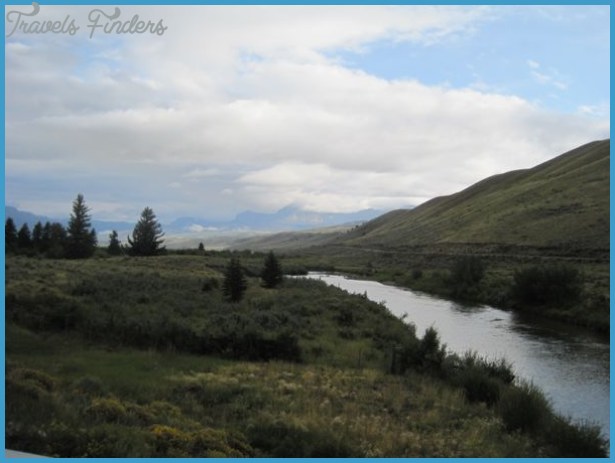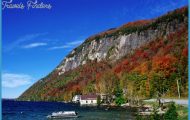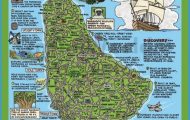Instead of traveling via Jackson from the south, you may choose to reach the South Entrance via the southeast, from Dubois. Dubois, Wyoming Dubois Municipal Airport Population: 950 3.5 mi. (5.5 km) NW A small western town with one main street, Dubois (called DOO-boys by residents) is about 83 miles (134 km) from the South Entrance on an excellent road over high Togwotee (TOE-guh-dee) Pass. Dubois has inexpensive motels, several restaurants, and the National Bighorn Sheep Interpretive Center, where tours can be arranged to visit the sheep’s fall and winter range. U.S. Highways 26 and 287 Outside the town, once a center for the production of railway ties, are now cattle and guest ranches. Spectacular striped hills, composed of alternating red and white layers of sedimentary rock, line the road west of town. Shoshone and Bridger-Teton national forests offer two high-altitude picnic areas and two campgrounds as you cross Togwotee pass, at 9544 feet (2909 m) a higher mountain pass than any inside Yellowstone.
Togwotee was a medicine man and chief of the Sheepeater tribe. He led early explorers across this pass and guided Gen. Philip H. Sheridan on his expedition in 1882. After you cross the pass, rolling hills and meadows greet the eye, with high mountains on all sides. You descend to the Buffalo Fork of the Snake River and cross the east boundary of Grand Teton National Park. Reaching Moran Junction, you may continue toward Yellowstone or turn left for the Tetons or Jackson. The Tetons and How They Got So High The name Tetons (Les Trois Tetons The Three Teats in the somewhat indecent French of the early trappers) comes from the three great summits you can see from the Idaho side, although there are many more than three peaks in the range. These mountains are truly awe inspiring: 12 peaks exceed 12,000 feet (3650 m), and the Grand Teton is 13,770 feet (4197 m) high. The striking difference in elevation from that of Jackson Hole is what makes these mountains so special. There aren’t a lot of places where you can gaze up at a sky full of mountain peaks whose tops are 5000 to 7500 feet (1500-2300 m) above you while you stand at their base with no foothills in between! As author Owen Wister wrote over 100 years ago: The way in which they come up without any heralding of foothills seems as though they rose from the sea. How did these mountains get so high? The eminent author John McPhee, although not a geologist, describes the process like this in his book, Rising from the Plains: The crust extends, the earth stretches, the land pulls apart and one result is a north-south-trending normal fault, fifty miles long.
On the two sides of this fault, blocks of country swing [as though] on distant hinges like a facing pair of trapdoors one rising, one sagging. The rising side is the rock of the nascent Tetons, carrying upward on its back the stratified deposits . Geologists have proven that the Tetons certainly did rise, though not from the sea, as it seemed to Wister. This range of mountains was formed as part of the east-west pulling apart of the North American plate an activity that is still going on from Arizona to Idaho and Wyoming. In the Teton area, when the pulling apart overcame the strength of the rocks, they broke to form a fault, that is, a fracture in the earth where the two sides move past each other. This fault runs roughly north to south and slants down steeply to the east. The more the rocks are pulled apart, the more space needs to be filled in. The block that is sinking helps to fill the gap that would otherwise develop. The steepness of the mountain front that looms over Jackson Hole testifies to the strength and resistance to erosion of the 2.7-billion-year-old rocks recently exposed by the fault. The fault is still active, the land continues to sink, and the mountains continue to rise, but streams have brought sediments in to fill the valley floor. This process has been going on for about 7.5 million years so far, according to Creation of the Teton Landscape by David D. Love, John C. Reed, and Kenneth L. Pierce (Grand Teton Natural History Association, 2003).

